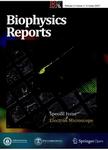The emerging role of tubulin posttranslational modifications in cilia and ciliopathies
The emerging role of tubulin posttranslational modifications in cilia and ciliopathies作者机构:Department of Biochemistry and Molecular BiologyMayo Clinic Division of Nephrology and HypertensionMayo Clinic Mayo Translational Polycystic Kidney Diseases CenterMayo Clinic
出 版 物:《Biophysics Reports》 (生物物理学报(英文))
年 卷 期:2020年第6卷第4期
页 面:89-104页
核心收录:
学科分类:1001[医学-基础医学(可授医学、理学学位)] 10[医学]
基 金:funding from the National Institutes of Health(R01DK090038, 1R01DK099160) P30 center grant(P30DK90728)
主 题:Tubulin posttranslational modifications (PTMs) Cilia Ciliopathies Acetylation Glutamylation Glycylation
摘 要:Tubulin posttranslational modifications(PTMs) add ‘ tubulin code to generate functional diversities of microtubules. Several types of tubulin PTMs accumulate on axonemes and basal bodies of cilia,including acetylation, glutamylation, glycylation and detyrosination. Among them, glutamylation, glycylation and detyrosination are mostly enriched in the B-tubules, whereas acetylation occurs on both Aand B-tubule of the microtubule doublets in a similar level. Recent studies indicate that tubulin PTMs are critical for the fine tuning of assembly/disassembly, maintenance, motility, and signaling of *** tubulin PTMs are strongly implicated in human disorders including ciliopathies and neuron degeneration. Here, we review the current understanding how tubulin PTMs regulate cilia formation and function, and their relevance to human health.



